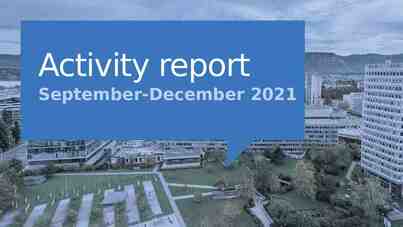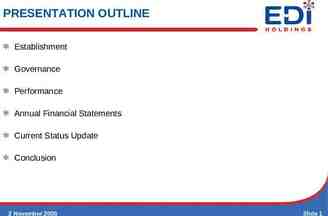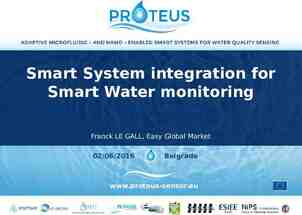Contaminants in fish and invertebrates from the Lower Colorado
16 Slides70.50 KB

Contaminants in fish and invertebrates from the Lower Colorado River: AZ, CA, Sonora and Baja California Jaqueline Garcia1 and Kirke King2 1 University of Arizona, ERL 2 U.S. Fish and Wildlife Service, Phoenix

Introduction The riparian and marsh ecosystems along the Lower Colorado River (LCR) are continuously impacted by contaminants from the agriculture and mining industry and from naturally occurring elements, such as selenium.

Objectives Describe the levels of metals, metalloids and organochlorine pesticides in fish and invertebrates from the lower Colorado River to determine the risk at which fisheating birds such as the endangered Yuma Clapper rail are exposed.

Methods Samples of fish (mosquito fish, sailfin molly, red shiner, sunfish, mullet and carp), and invertebrates (crayfish, freshwater shrimp and water insects) were collected by the authors from 1 site in CA, 6 sites in AZ, and 4 sites in Sonora and Baja California. Samples were sent to an specialized laboratory for metal scan and for detection of organochlorine elements.

Results

As, B, Cd, Cu, Fe, Hg, Ni, Pb, Sr and V were below their toxic threshold in the analyzed samples (N 51). The element that exceeded the toxic threshold in a higher percent was selenium with 78% of the samples above 4 ppm. Selenium was below detection limit ( 5 ppb) in water samples and it was within normal background levels in sediment samples from the CRD

DDT was found in levels exceeding its lethal concentration of 0.08 ppm in one composite fish sample from Imperial Wildlife (0.32 ppm), one from the Colorado River (0.08 ppm), one from the Hardy River (0.10 ppm) and one from the Cienega de SC (0.13 ppm).

LITERATURE REVIEW Site CA AZ BC SON Year Water Sediment Fish Se (ug/L) Se (ug/g) Se (ug/g) Davis Dam 1986 2 1.30 4.6 Parker Dam 1973-84 3 1986 2 3.30 3.6 Cibola NWR 1986 2 2.30 4.6 1988-89 1.70 5.3 1989-90 0.66 Imperial NWR 1973-84 3 1980 7.3 1986 2 7.10 8.0 1988-89 3.30 7.2 1991-92 0.93 6.3 Yuma area 1980 5.0 1986 0.50 8.6 Mouth of 1973-84 7 Gila River 1986 1.10 1.6 Morelos Dam 1973-84 3 1986 0.20 Mexicali Valley 1986 6.3

GM of Selenium (ppm dry wt) Selenium levels in fish & inverts 25 20.2 from the LCR 20 * 13.3 13.1 15 ** 10 ** 9.8 9.6 8.5 5.7 5.3 * 5 4 0 5.0 0.3 Potential toxic threshold Yuma Imperial Havasu Cibola1 Salton Sea * 95% significance, ** 99% significance Gila CR-Mex Cienega Hardy El Doctor

Differences between Se levels from the Delta and from the LCR ln of Se levels 5.0 t-test results: GM Mex 5.6 ppm GM US 11.4 ppm DF 45 t-test 2.7 P value 0.008 2.5 0.5 Lower Colorado Colorado River Delta River MEXICO US Note: El Doctor data was not included for this analysis

Discussion Among pesticides, metals and semi-metals analyzed, the element that appears to be present in concentrations above the toxic threshold in most of the fish and invertebrates samples is selenium. The highest levels of Se were found in Havasu NWR, Cibola NWR, Yuma Proving Grounds and Imperial NWR, AZ.

Discussion On the other hand, the lowest levels of selenium were found in fish and invertebrates from the El Doctor wetland. This is a system that does not receive runoffs from the the Colorado River. The levels of selenium in the Delta were lower than the levels of selenium from upstream sites in the US (p-value 0.008).

Discussion Tidal influence and recent Colorado River floods might be the reason for the lower selenium levels found in fish and invertebrates from the Delta wetlands. However, levels in fish and invertebrates from the river mainstream in Sonora remained high.

Conclusions Fish-eating birds from the CR Delta are exposed to lower levels of selenium from their food items than birds from upstream wetlands. However, Se levels in the Delta are still above the toxic threshold. This is why more attention should be paid on the direct effects of these levels on the endangered species of the Delta which are the Yuma Clapper Rail and the desert pupfish.

Final remarks A study to analyze the levels of contaminants, including selenium, on the desert pupfish populations from the CR Delta is on its way. However, funding for this research is limited and support specially for sample analysis will be highly appreciated at this point.

THANK YOU !!






